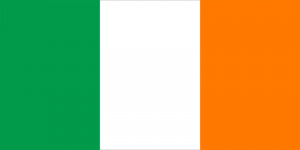Language/Irish/Grammar/How-to-Use-Be
Hi Irish learners! 😊
In this lesson, we will learn all about the verb "be" in Irish grammar. We will also cover its various forms and how to use it correctly in sentences. Let's get started!
Consider exploring these related pages after completing this lesson: Conditional Mood & Adjectives.
Introduction to the verb "be"[edit | edit source]
The verb "be" is one of the most important verbs in any language, and Irish is no exception. It is used to indicate existence, identity, and attributes of a subject. In Irish, "be" has multiple forms depending on the tense, number and person. Let's first take a look at the conjugation of "be" in the present tense:
Present Tense[edit | edit source]
| Irish | Pronunciation | English |
|---|---|---|
| tá | tah | am, is, are (singular and plural) |
As you can see from the table above, "tá" is used for both plural and singular subjects. This is the most common form of "be" in Irish, and you will hear it used frequently in conversation.
Let's now take a look at some other forms of "be".
Past Tense[edit | edit source]
In the past tense, the verb "be" changes depending on the gender and number of the subject.
For example:
| Irish | Pronunciation | English |
|---|---|---|
| bhí mé | vee may | I was (masculine) |
| bhí mé | vee may | I was (feminine) |
| bhímid | vee-mid | we were (masculine and feminine) |
As you can see from the table above, the verb "be" changes depending on the gender and number of the subject.
Future Tense[edit | edit source]
In the future tense, "be" is represented by the word "beidh".
For example:
| Irish | Pronunciation | English |
|---|---|---|
| beidh mé | bay may | I will be |
| beidh tú | bay too | You will be |
| beidh sé, sí | bay shay, shee | He, she will be |
In the future tense, "be" is used to indicate a future action or state.
Now that we've covered the basic forms of "be", let's look at some examples of how to use it in context.
Using "be" in context[edit | edit source]
To help understand how to use "be" in context, let's create a dialogue between two people. Person 1 will ask questions and Person 2 will respond using "be" in different tenses.
Person 1: Cad é an t-ainm atá ort? (What is your name?) Person 2: Is mise Lisa. (My name is Lisa. - "Is" is an affirmative form of "be" in Irish.)
Person 1: Cá bhfuil tú i do chónaí? (Where do you live?) Person 2: Tá mé i mo chónaí i gCathair Átha Cliath. (I live in Dublin - "Tá" is present form of "be" in Irish.)
Person 1: An raibh tú sa Spáinn le déanaí? (Were you in Spain recently?) Person 2: Bhí mé sa Spáinn le déanaí. (I was in Spain recently - "Bhí" is past form of "be" in Irish.)
Person 1: An mbeidh tú ag dul go dtí an teilifís anocht? (Will you be watching TV tonight?) Person 2: Beidh mé ag dul go dtí an teilifís anocht. (I will be watching TV tonight - "Beidh" is future form of "be" in Irish.)
As you can see from the dialogue above, "be" is used to indicate identity, location, past actions and future actions. It is a versatile verb that can be used in a variety of contexts.
Now let's take a look at some common phrases that use "be":
Common Phrases with "be"[edit | edit source]
| Irish | Pronunciation | English |
|---|---|---|
| Tá fáilte romhat | tah faw-il-te ruh-wut | You are welcome |
| Tá sé deacair | tah shay djak-ir | It is difficult |
| Tá an aimsir go hálainn inniu | tah un aim-shir guh haw-law-in in-you | The weather is lovely today |
These are just a few examples of the many ways in which "be" can be used in Irish. The more you practice, the more comfortable you will become using it in different contexts.
If you want to improve your Irish Grammar, you can also use the Polyglot Club website. Find native speakers and ask them any questions!
➡ If you have any questions, please ask them in the comments section below.
➡ Feel free to edit this wiki page if you think it can be improved. 😎
Other Lessons[edit | edit source]
- Future Tense
- Give your Opinion
- Imperative Mood
- Irish Modal Verbs (need, want, must, can)
- Negation
- Adjectives
- Irish Prepositional Pronouns
- Conditional Mood
- Questions

